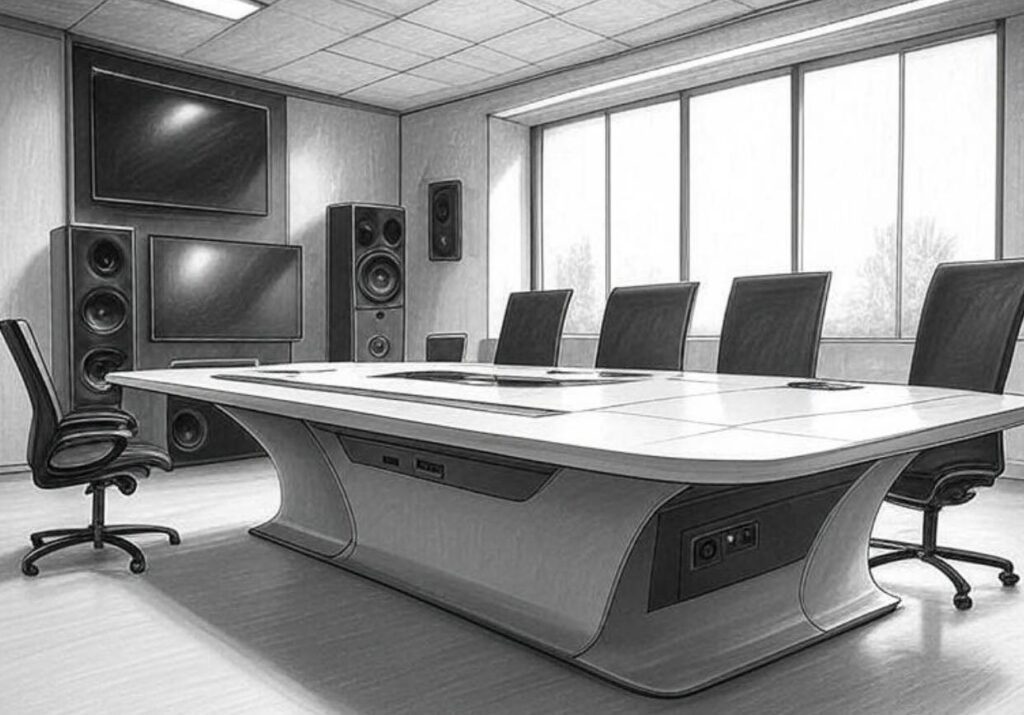Revolutionizing Business Communication: The Benefits of Conference Meeting Rooms Setup and Integration with Technological Solutions

As the business world becomes increasingly globalized, it is more important than ever for organizations to have effective communication and collaboration systems in place. One of the key components of these systems is conference meeting rooms, which are specially designed spaces where employees can meet, share ideas, and work together on projects. In this article, we will explore the benefits of conference meeting rooms and why organizations should consider investing in technological solutions to enhance their setup and integration.
The Need for Conference Meeting Rooms
Conference meeting rooms are essential for businesses for a variety of reasons. Firstly, they provide a space where employees can meet face-to-face and discuss ideas and strategies. While video conferencing and other digital communication tools have made it easier for employees to connect remotely, there is still a lot of value in meeting in person. Being in the same room allows for better communication, more nuanced discussions, and a greater sense of collaboration.
In addition, conference meeting rooms can be used for a wide range of purposes, from conducting interviews and training sessions to holding client presentations and board meetings. Having dedicated meeting rooms ensures that employees have access to a space where they can work together without distractions or interruptions.
The Benefits of Technological Solutions
While conference meeting rooms are important, they are not always enough on their own. In order to truly enhance collaboration and communication, organizations should consider investing in technological solutions that can improve the setup and integration of these rooms. Here are some of the benefits of such solutions:
Improved Audio and Video Quality
One of the biggest challenges with conference meeting rooms is ensuring that everyone can hear and see each other clearly. Technological solutions such as high-quality microphones and speakers, as well as high-definition displays, can greatly improve the audio and video quality of these meetings, making them more effective and productive.
Better Collaboration Tools
In addition to audio and video quality, technological solutions can also provide better collaboration tools. For example, interactive displays and whiteboards can be used to share ideas and brainstorm together. Collaboration software can be integrated into the meeting room setup, allowing for real-time document sharing and editing. These tools can help teams work together more efficiently and effectively.
Integration with Other Systems
Finally, technological solutions can also help conference meeting rooms integrate with other systems and software used by the organization. For example, a meeting room setup could be integrated with the company’s calendar system, making it easy to schedule and book rooms. It could also be integrated with project management software, allowing for seamless collaboration between teams.
The Pros and Cons of Investing in Technological Solutions
While there are many benefits to investing in technological solutions for conference meeting rooms, there are also some potential downsides to consider.
Here are some of the pros and cons:
Pros of Conference Meeting Rooms Setup and Integration:
- Improved communication and collaboration among employees
- Provides a dedicated space for meetings, interviews, presentations, and other purposes
- Allows for face-to-face interactions that are more nuanced and effective
- Helps to reduce distractions and interruptions
- Technological solutions can greatly enhance the setup and integration of conference meeting rooms
- Improved audio and video quality during meetings
- Better collaboration tools such as interactive displays and whiteboards
- Integration with other systems and software used by the organization
- Real-time document sharing and editing capabilities
- Increased efficiency and productivity for teams
Cons of Conference Meeting Rooms Setup and Integration:
- Can be expensive to set up and maintain
- Requires additional technology and equipment
- May require specialized training for employees to use it effectively
- May not be necessary for smaller organizations or those with remote teams
- May not be as effective for certain types of meetings or collaborations